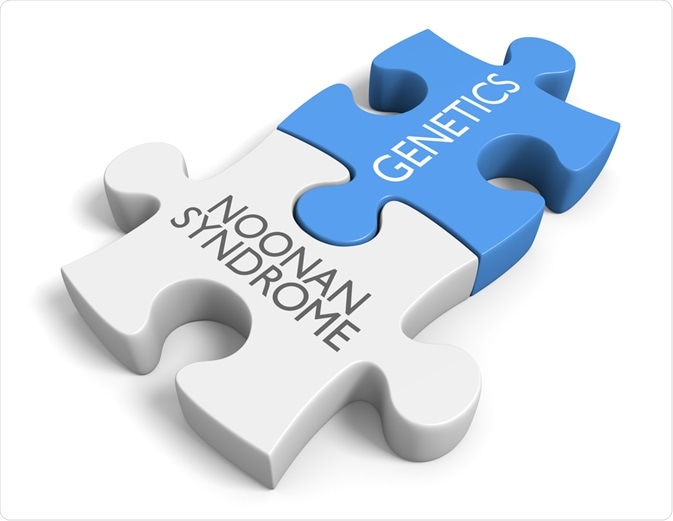Noonan syndrome is a common autosomal dominant multiple congenital anomaly syndrome that was initially described over 40 years ago.

Image Credit: David Carillet / Shutterstock.com
This disease belongs to the group of RASopathies, which are developmental disorders caused by germline mutations in genes encoding particular proteins of the RAS/mitogen-activated protein kinase (MAPK) pathway.
Genetics and features of Noonan syndrome
The majority of cases of Noonan syndrome stem from mutations in three genes including PTPN11, SOS1, or RAF1. PTPN11 gene mutations account for half of all cases of Noonan syndrome, whereas SOS1 and RAF1 gene mutations account for 10% and 5 to 10% of Noonan syndrome cases, respectively. In 20% of people with Noonan syndrome, the exact cause of the disorder is still unknown.
Despite the lack of stringent diagnostic criteria, the principal features of Noonan syndrome are well established. These include short stature, congenital heart defects, unusual chest shape with pectus carinatum and pectus excavatum, broad or webbed neck, variable degree of developmental delay, cryptorchidism (undescended testes), and characteristic facial features.
Epidemiology
The incidence of Noonan syndrome is consistent and reported to be between 1 in 1,000 and 1 in 2,500 live births, albeit mild expression is said to occur in up to 1 in 100 births in the general population. The characteristic variable expressivity makes it difficult to identify individuals who are only slightly affected.
Familial reappearance is consistent with an autosomal dominant mode of inheritance; however, de novo mutations are more common, accounting for 60% of all cases. In the absence of serious congenital heart defects, there is no reduction in life expectancy. Higher mortality is described in patients with cardiomyopathy.
Researchers have found that among 1,016 children with different congenital heart defects, 1.4% of them had Noonan syndrome. The same has been shown for 7% of children requiring surgery for pulmonary stenosis. There is no known racial predilection for this disorder, and the average age of diagnosis is 9.
Noonan Syndrome
Disease management
Physical and intellectual abilities tend to be normal in most adults with Noonan syndrome, although some of them necessitate multidisciplinary evaluation and regular follow-up care. Management guidelines were recently developed by American and European consortia, and optimized according to age with an emphasis on screening and testing for common health issues.
Treatment of the complications of Noonan syndrome is generally standard and does not differ from treatment in the general population. Infant stimulation programs are available for children with developmental delays. If growth hormone levels are insufficient, growth hormone therapy can represent a viable treatment option. Aspirin therapy should be avoided because it may aggravate a bleeding diathesis.
Extensive variability in the phenotypic expression of Noonan syndrome with a myriad of unresolved questions is a common issue encountered by physicians. The phenotype can vary from mild facial features and minimal pulmonary valve stenosis in adults to severe dysmorphisms with life-threatening heart disease in neonates. Therefore, treatment should be based on the type and severity of the symptoms and complications.
References
Further Reading
Last Updated: Mar 23, 2021